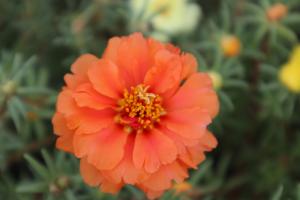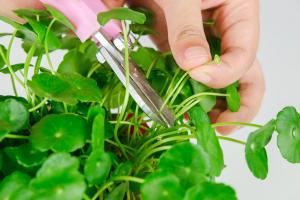Introduction
Plant pollination is a crucial process that forms the foundation of many ecosystems on our planet. Plants rely on pollination to reproduce and maintain genetic diversity, which provides the basic building blocks of the food chain for both animals and humans. In this article, we will explore what plant pollination is and why it is so important.
What is Plant Pollination?
Plant pollination is the mechanism by which pollen grains are transferred from the male part of a flower to the female part of the same or a different flower. Pollen grains contain the male sex cells of a plant, and when they reach the female part of the flower, they fertilize the egg cells, leading to the formation of seeds. This process is essential for the reproduction of most flowering plants, including agricultural crops, fruit trees, and ornamental plants.
Types of Plant Pollination
There are two main types of plant pollination: self-pollination and cross-pollination. Self-pollination occurs when pollen from the anther of a flower is transferred to the stigma of the same flower or another flower on the same plant. Cross-pollination, on the other hand, occurs when pollen from the anther of one plant is transferred to the stigma of a flower on another plant of the same species. Cross-pollination is considered more effective than self-pollination because it promotes greater genetic variation, which can lead to stronger and more resilient plants.
Agents of Plant Pollination
Plant pollination can be accomplished by a variety of agents, including wind, water, and animals. Wind-pollinated plants typically have small, inconspicuous flowers with large amounts of pollen that is lightweight and easily carried by the wind. Examples of wind-pollinated plants include grasses, pine trees, and ragweed. Water-pollinated plants are typically found in aquatic environments and have small, inconspicuous flowers that release their pollen directly into the water. Examples of water-pollinated plants include seagrasses, water lilies, and pondweeds. Animal-pollinated plants, which include the majority of flowering plants, have evolved a variety of mechanisms to attract and reward pollinators such as bees, butterflies, birds, and bats. These plants typically have brightly colored flowers with distinctive shapes and patterns that advertise their nectar and pollen rewards. Animal-pollinated plants have also developed a variety of other attributes that make them more attractive to pollinators, such as fragrance, flavor, and texture.
Importance of Plant Pollination
Plant pollination is essential for the health and survival of most ecosystems on our planet. Without pollination, many plants would not be able to reproduce, leading to the loss of potentially thousands of species. Additionally, most of the world's agriculture depends on pollinators to produce crops such as fruits, vegetables, nuts, and seeds. In fact, it is estimated that pollinators are responsible for one-third of the food we eat. Pollinators also help to maintain biodiversity by promoting genetic variation, which can lead to stronger and more adaptable plant populations that are better able to cope with environmental changes such as climate change and habitat loss.
Conclusion
In conclusion, plant pollination is an essential process that plays a critical role in the reproduction and survival of most ecosystems on our planet. It is accomplished by a variety of agents, including wind, water, and animals, and is crucial for the production of food crops as well as the maintenance of genetic diversity. It is important that we continue to study and protect pollinators and their habitats, as they are essential for the health and well-being of our planet and all its inhabitants.

 how many times do yo...
how many times do yo... how many planted tre...
how many planted tre... how many pine trees ...
how many pine trees ... how many pecan trees...
how many pecan trees... how many plants comp...
how many plants comp... how many plants can ...
how many plants can ... how many plants and ...
how many plants and ... how many pepper plan...
how many pepper plan...






























